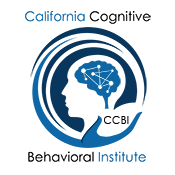Las Vegas Triggered Us All!
Fear – unbelievable fear and feelings of horror as we watched the shooting in Las Vegas unfold before our eyes on the television set or in person if we attended the concert. Although the fear response is normal and key to survival, the fear circuit can get stuck in a type of feedback loop and over-coupling with danger, which tends to cause a person to experience the common symptoms associated with trauma. And then we add the television news programs playing the horror over and over and over again, us glued to our television set watching, can re-traumatize many at being overloaded with scenes of horror and the limbic system of the brain being triggered repeatedly. When a traumatic event is experienced, certain structures of the brain go offline because traumas are intense and the brain goes into survival mode. As a result, the traumatic memory is not stored like a normal memory. It is instead stored in an isolated, fragmented, and frozen way. Because it is isolated from other memory and knowledge, when one is triggered by something that reminds the brain or nervous system of the memory, that information does not have the ability to readily connect with other information in the brain, which makes the nervous system believe the person is in danger even when in reality those watching horrific events from their homes or offices are safe
.
When a traumatic event is experienced, certain structures of the brain go offline because traumas are intense and the brain goes into survival mode. As a result, the traumatic memory is not stored like a normal memory. The researchers believe the visual cortex is significant in PTSD because it’s not only doing visual processing, but also assesses potential threats. The locus coeruleus is also important because it’s responsible for triggering the release of adrenaline during stress or serious threat during “fight or flight” responses.
This breakthrough discovery on functional brain differences in those with PTSD provides a neurobiological model for assessing fear generalization in which PTSD symptoms are triggered by things that merely resemble the source of original trauma.
“People with post-traumatic stress disorder grow anxious based on reminders of past trauma, and generalize that fear to a variety of triggers that resemble the initial trauma,” Morey concluded. “Current fear conditioning therapies are limited by repeated use of the same cue to trigger the initial trauma, but they might be enhanced by including cues that resemble, but are not identical to, cues in the original trauma.”
The nervous system (limbic) then does its job very well, trying to alert the person to danger, even if there is none. Keep in mind this process in entirely unconscious. We can’t think ourselves out of the nervous system’s automatic response. So PTSD can be created.
It is common, post-trauma, to see an over-linking between fear and danger because of the brain process described above: the person has frozen fragments of the trauma that are maladaptively stored in the brain, which means there are also maladaptive linkages. The brain does not know it is safe because parts of it are frozen in time and not stored in normal memory. For a person who has experienced pervasive trauma throughout their life, the over-coupling of fear and danger is even more sever.
Once people understand this process, it is usually relieving to know they are not “crazy” and their nervous systems are simply trying to promote survival. Understanding the dynamic that is happening in the body is the first step to uncoupling fear and danger. Some of the work in uncoupling is done with specific interventions such as EMDR (eye movement desensitization and reprocessing) therapy, somatic experiencing, and/or ego state therapy and cognitive therapy. However, between sessions a person can aid this process by simply paying attention to the moment. Paying attention to body sensations, emotions, reactions, and the environment is a big part of the work. Periodically checking the environment for safety can be especially helpful. Using the S.T.A.R. method (Stop/Think/Assess/Respond) will help with anxiety and safety by taking a moment to breath, look around and notice where you are and is there danger or not and then respond accordingly. Noticing what it’s like to be triggered, have fear, and still notice you are safe takes it to another level and can advance the uncoupling process.
Our fear response is a positive in keeping us safe. Our limbic system (fright, flight, fear, and freeze centers) is necessary for safety. However, when we see horror happen on television or in person, it can also be the area where we repeatedly experience an event over and over so it needs to be addressed with a mental health professional who specializes in PTSD and fear.
If you are having a hard time after watching the Las Vegas shooting, please go to https://theccbi.com or contact your mental health professional.

